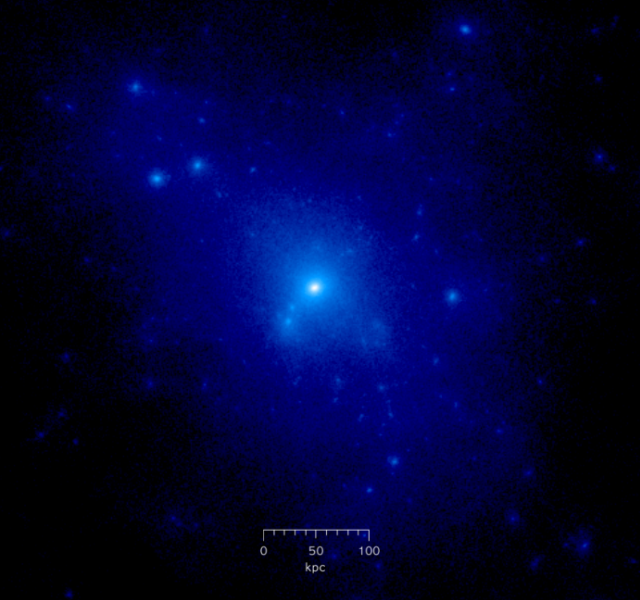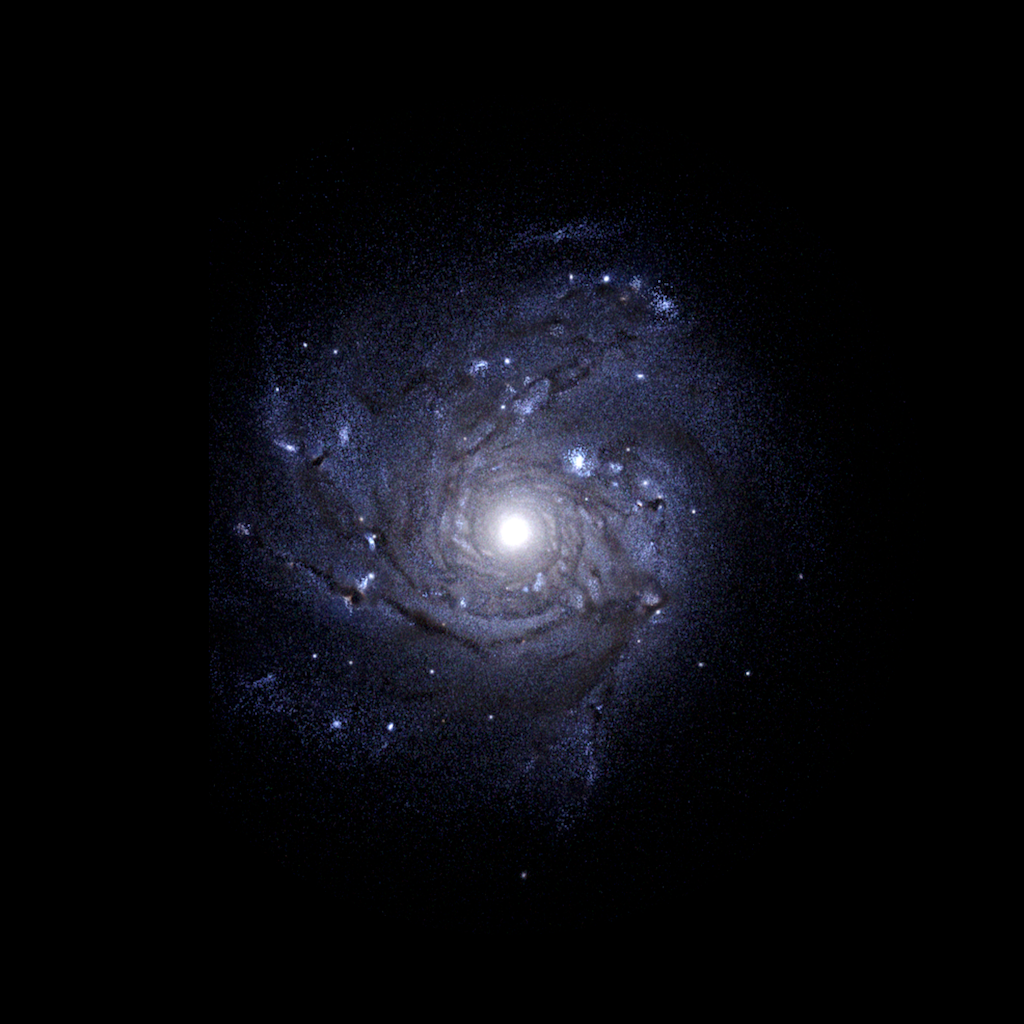The Universe in a box
Understanding the emergence of galaxy properties through numerical simulations

Dr. Corentin Cadiou
University College London

Credits: NASA & ESA


Sombrero galaxy
M83


“Penguin” galaxy
Magellanic clouds

M87 galaxy
What is a galaxy?
Credits: A. Russell/ESO
What is a galaxy?
Credits: A. Russell/ESO
- Hundreds of billions of stars*
- Dust
- Gas
- Dark matter
- Supermassive black holes
- Cosmic rays, planets, …
* only true for Milky Way, may vary by orders of magnitude


Dust in the horsehead nebula, credits: HST
Star-forming region (Westerlund 2), credits: HST

SMBH in galaxy M87, credit: EHT

DM (in blue) in a simulation
Credits: Adams Evans
Observations in astronomy
Credits: Adams Evans
Observations in astronomy
Three key issues
- Distances — no parallax



Credits: Adams Evans
Observations in astronomy
Three key issues
- Distances — no parallax
- Times — seemingly no evolution




Credits: Adams Evans
Observations in astronomy
Three key issues
- Distances — no parallax
- Times — seemingly no evolution


Andromeda in 1899 by Isaac Roberts


Credits: Adams Evans
Observations in astronomy
Three key issues
- Distances — no parallax
- Times — seemingly no evolution
- Scale coupling






mm
km
10,000 km

Credits: Adams Evans
Observations in astronomy
Three key issues
- Distances — no parallax
- Times — seemingly no evolution
- Scale coupling






km
10,000 km
\(10^{-3} \ \mathrm{ly} \)

Credits: Adams Evans
Observations in astronomy
Three key issues
- Distances — no parallax
- Times — seemingly no evolution
- Scale coupling






\(10\ \mathrm{ly}\)
10,000 km
\(10^{-3} \ \mathrm{ly} \)

Credits: Adams Evans
Observations in astronomy
Three key issues
- Distances — no parallax
- Times — seemingly no evolution
- Scale coupling






\(10\ \mathrm{ly}\)
\(100,000 \ \mathrm{ly}\)
\(10^{-3} \ \mathrm{ly} \)

NASA; ESA; and F. Summers
Simulations are proxy for experiments
Merging of the Milky Way (our own galaxy)
with Andromeda [in a few billion years]
NASA; ESA; and F. Summers
Simulations are proxy for experiments
NASA; ESA; and F. Summers
How to simulate the Universe?
... and galaxies therein
Energy content of the Universe
We need to simulate an expanding Universe
Energy content of the Universe
Energy content of the Universe
We need to simulate an expanding Universe
Energy content of the Universe
We need to simulate an expanding Universe


Matter content of the Universe
✅ We need to simulate an expanding Universe
\(80\%\) dark matter
\(20\%\) “ordinary matter”
<\(1\%\) light, neutrinos, black holes, …
Dark matter
\(80\%\) dark matter
\(20\%\) “ordinary matter”
<\(1\%\) light, neutrinos, black holes, …
✅
Dark matter
Gas
\(80\%\) dark matter
\(20\%\) “ordinary matter”
<\(1\%\) light, neutrinos, black holes, …
✅
✅
Gas
Stars
Dark matter
\(80\%\) dark matter
\(20\%\) “ordinary matter”
<\(1\%\) light, neutrinos, black holes, …
✅
✅
✅
Gas
Stars
Dark matter



\(80\%\) dark matter
\(20\%\) “ordinary matter”
<\(1\%\) light, neutrinos, black holes, …
✅
✅
✅
Gas
Stars
Dark matter



\(80\%\) dark matter
\(20\%\) “ordinary matter”
<\(1\%\) light, neutrinos, black holes, …
✅
✅
✅
We have a scenario for galaxy formation
We have a scenario for galaxy formation
- Formation of dark matter "halos"...
- ... and of the cosmic web
- Gas falls in, galaxies merge
- Gas condenses to form stars & black holes
- Stars & black holes expel gas



3C 348 seen by HST & VLA


Crab nebula seen by HST

We have a scenario for galaxy formation
Can we test it?
Same initial conditions
Same “physical model”
They will diverge eventually (simulations running at different paces + numerical errors)
3 parameters:
- coherence
- separation
- alignment
Same initial conditions
Different parameters
Same “Universe”
Different physical models
Effect of physical parameters
Formation of stars
Formation of black holes
Feedback effects
[...]




Effect of physical parameters






Dubois+16







Black holes prevent the formation
of large spiral galaxies
Effect of physical parameters








Dubois+16



Different initial conditions
Same physical parameters
Different “Universe”
Same physical models
The initial conditions of the Universe
Our whole universe was in a hot, dense state*
Then nearly fourteen billion years ago expansion started, wait […]
*(and homogenous)

The initial conditions of the Universe

Planck satellite. Credits: ESA/NASA/JPL-Caltech
The initial conditions of the Universe

The initial conditions of the Universe

Initial conditions
Evolved Universe (+ galaxies)

The initial conditions of the Universe

Evolved Universe (+ galaxies)

The Universe is determined
by its initial conditions
Initial conditions = DNA of galaxies
Genetically modified galaxies?
\(14\ \mathrm{Gyr}\)



We can simulate galaxies on (super)computers
→ insight on actual galaxies
→ better understanding of physics
→ testbench of astrophysics
Questions?
Forming an elliptical galaxy...


Adaptive Mesh Refinment
Domain decomposition
The initial conditions of the Universe
Initial conditions:
- Tiny density fluctuations \(\sim 0.001\% \)
-
Very well described mathematically*
→ easy to generate
*By a Gaussian random field with known spectrum







The initial conditions of the Universe
Initial conditions:
- Tiny density fluctuations \(\sim 0.001\% \)
-
Very well described mathematically*
→ easy to generate & constrain
"Splicing" method, Cadiou+ in prep.
The initial conditions of the Universe
"Splicing" method, Cadiou+ in prep.


\(14\ \mathrm{Gyr}\)
The initial conditions of the Universe


Galaxies are influenced by a region at least \( 100\times\) larger


"Splicing" method, Cadiou+ in prep.


Galaxies are influenced by a region at least \( 100\times\) larger

"Splicing" method, Cadiou+ in prep.
\(100\ \mathrm{kly}\)
\(10 \ \mathrm{Mly}\)



Each bright dot is one galaxy



?
HST
- Create a box for space and time
- Include known physics
- Set some initial conditions
- Move time forward
- ☕*
-
SCIENCE!
- Compare to observations
- Make predictions
- …
How to simulate the Universe?
... and galaxies therein
* of the order of \( 10^6-10^7\ \mathrm{hr} \approx 100-1000\ \mathrm{yr} \)


- Create a box for space and time
- Include known physics
- Set some initial conditions
- Move time forward
- ☕*
-
SCIENCE!
- Compare to observations
- Make predictions
- …
How to simulate the Universe?
... and galaxies therein
* of the order of \( 10^6-10^7\ \mathrm{hr} \approx 100-1000\ \mathrm{yr} \)


- Create a box for space and time
- Include known physics
- Set some initial conditions
- Move time forward
- ☕
-
SCIENCE !
- Compare to observations
- Make predictions
- …
How to simulate the Universe?
... and galaxies therein

Forming galaxies...
New Horizon simulation — IAP, CNRS


50 million light year
50 million light year
Galaxies
- form in a "cosmic web"
- grow by accreting
- merge together
1 million light year
100,000 light year


